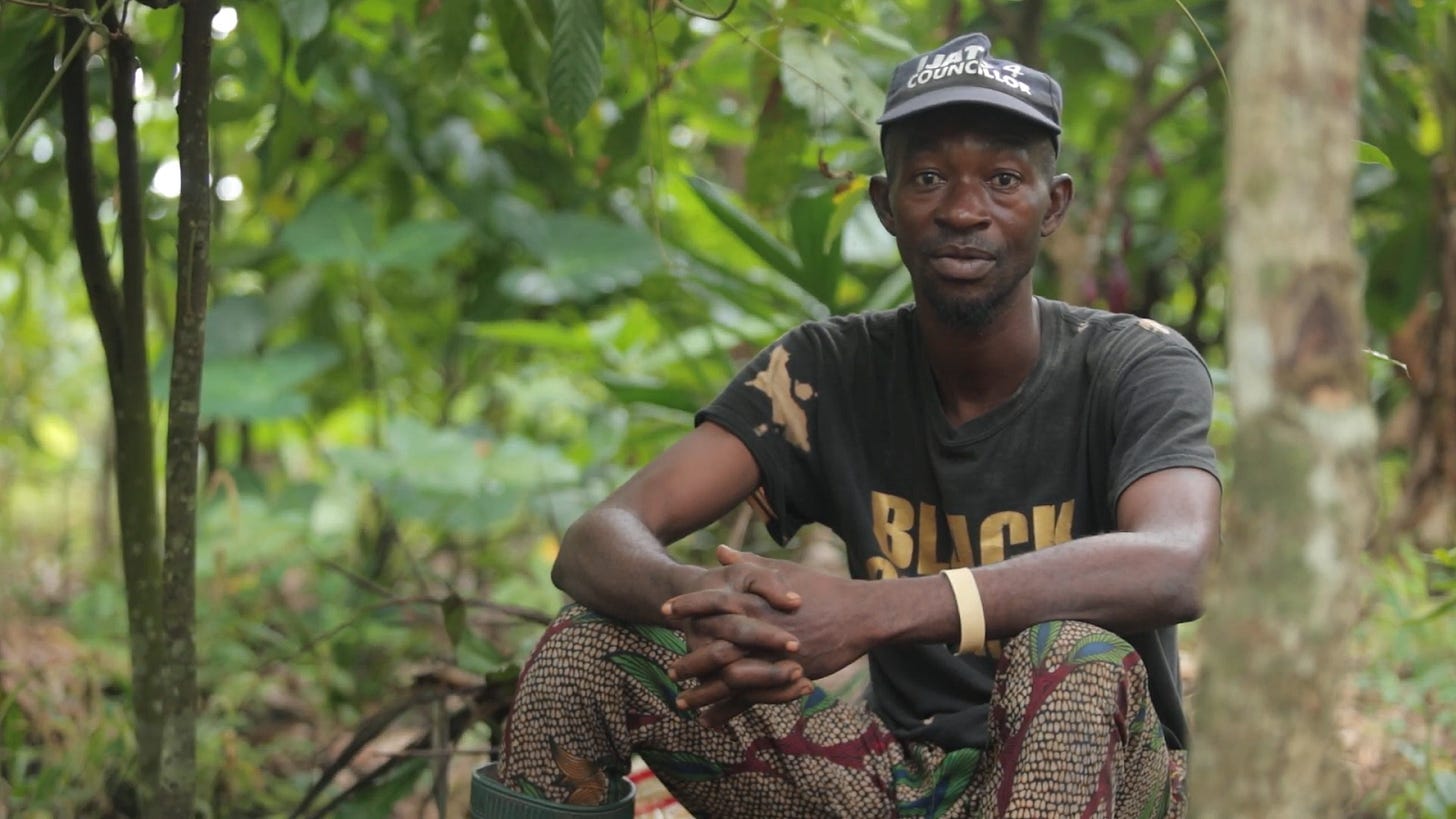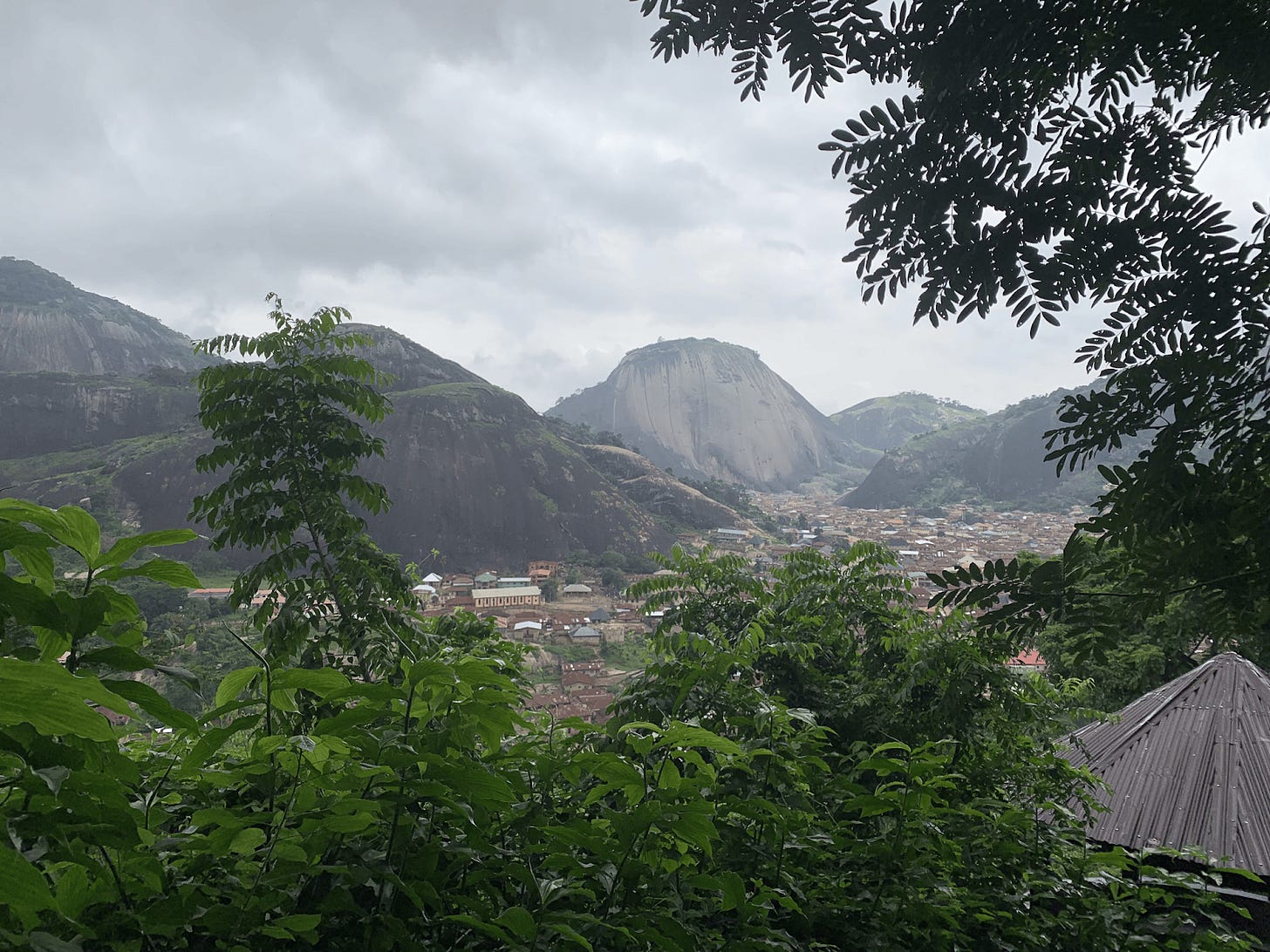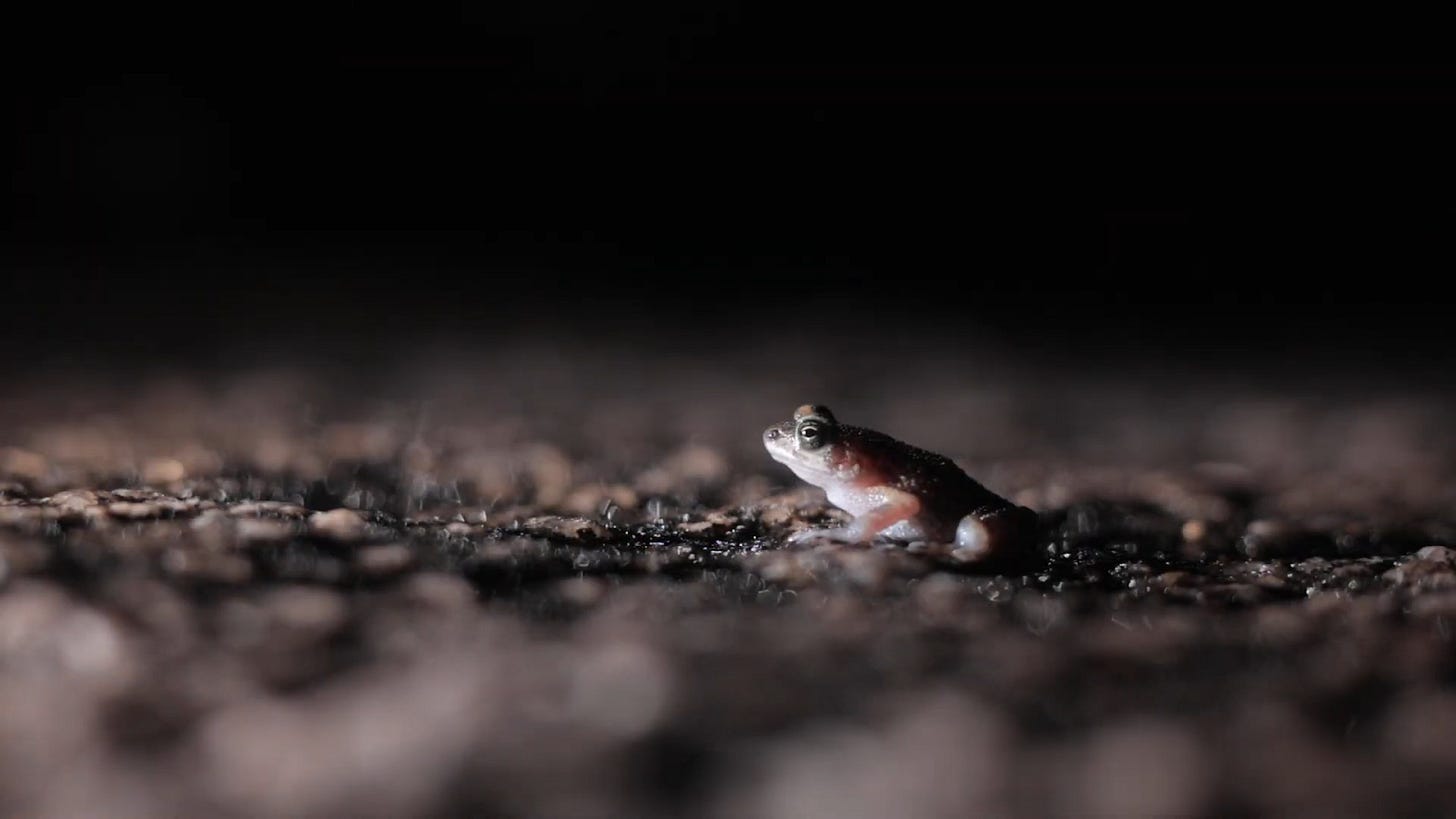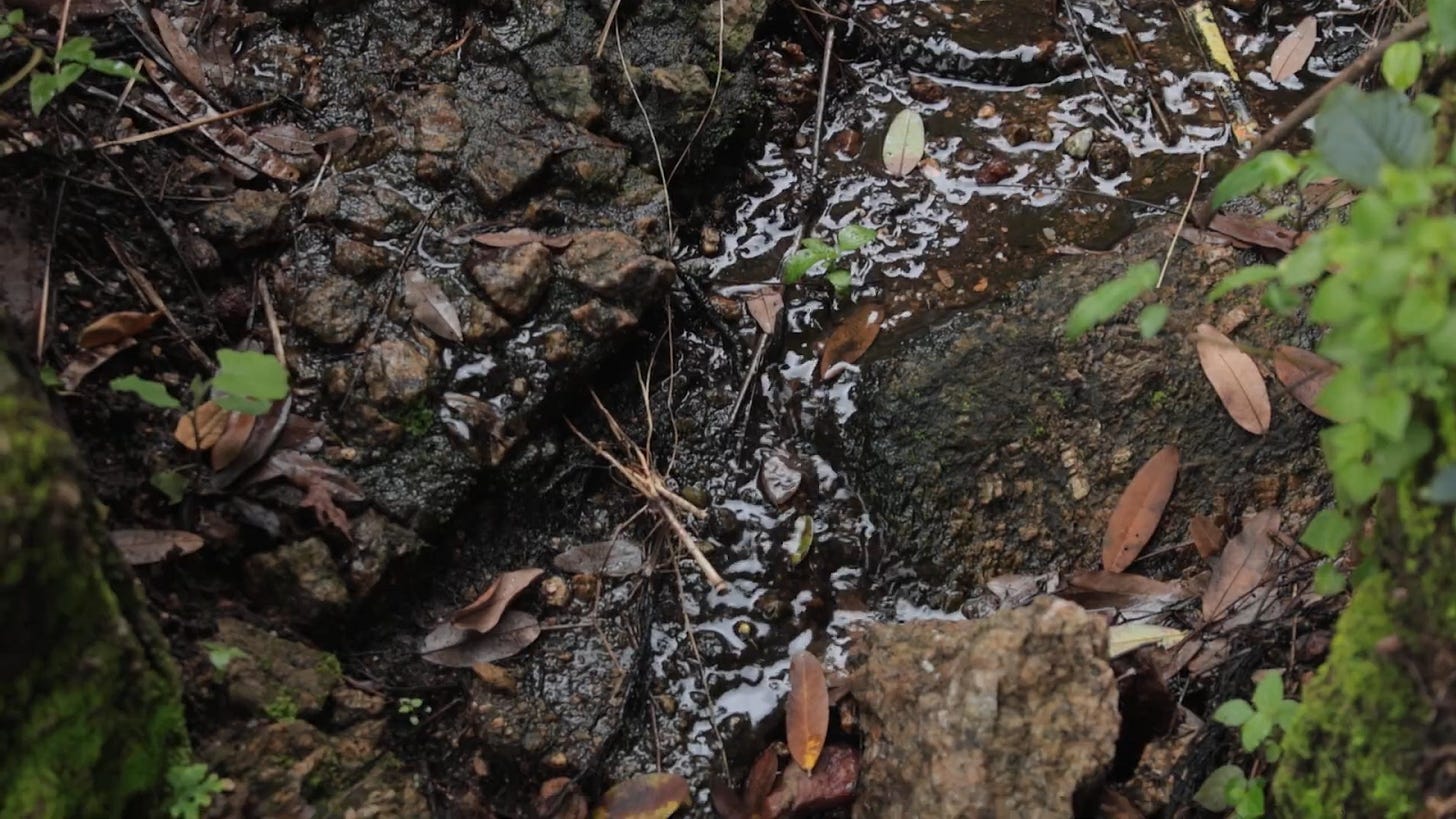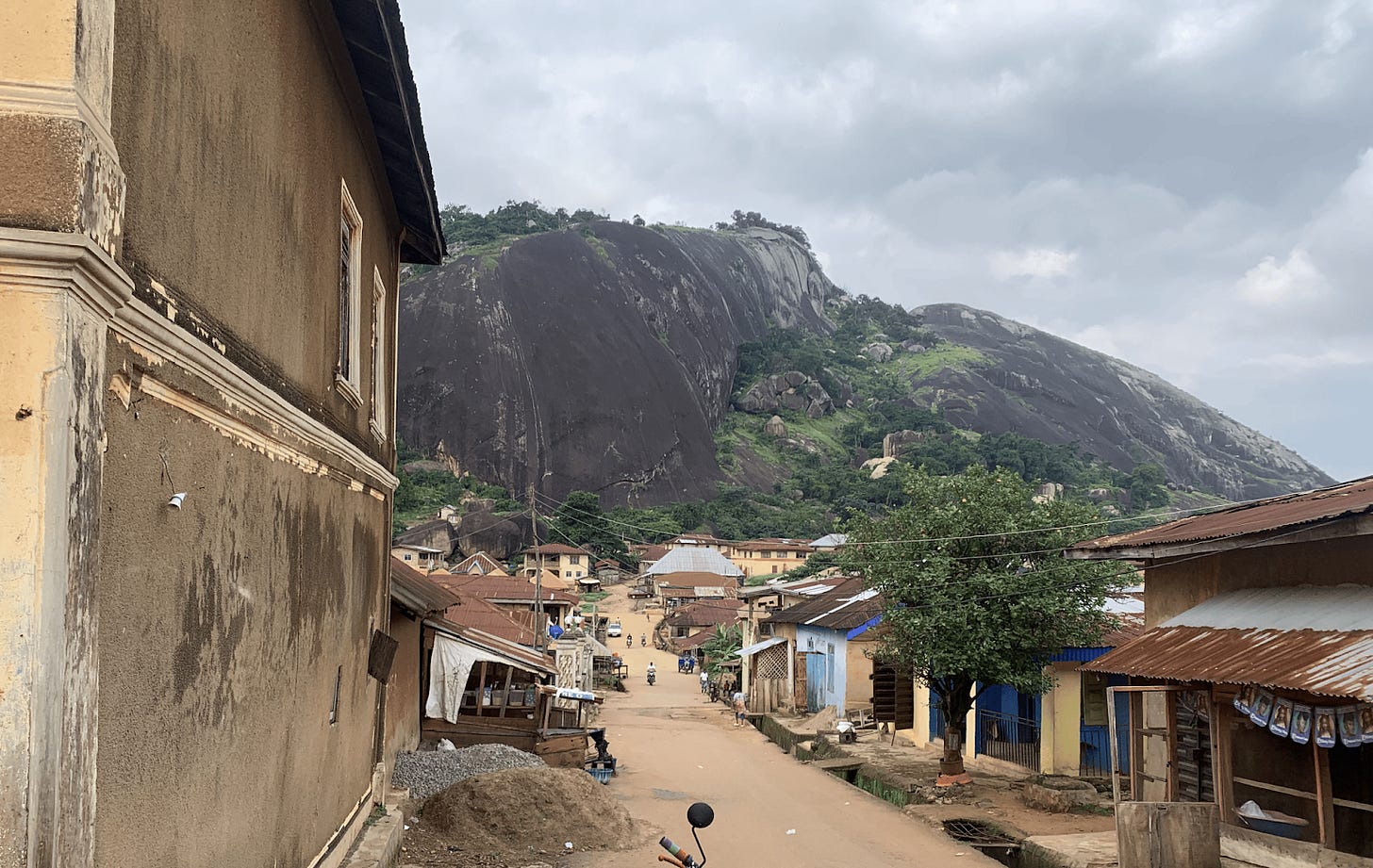
A version of this story was originally published in Daily Trust.
At the start of each farming season, Ademigokun Sunday grabs a sack of hoes and a cutlass and treks for 40 minutes to the wooded valleys of the Idanre Hills, the massive 3,000-foot-high rocky outcrops overlooking Idanre, a town in Ondo State, southwestern Nigeria. Like tens of other farmers climbing into the hills that week, Sunday comes to ‘slash and burn’ a patch of land so he can cultivate cocoa, plantain, cassava and walnut.
“If there is no farm burning, you cannot plant anything,” he says. “All this bush with big trees here — if I don’t burn it, it won’t allow my crops to germinate or grow.” But as the flames crackle through leaf litter and smoke rises, one of the world’s rarest creatures, invisible to Sunday, can be caught up in the fire.
The animal in question — the Perret’s toad — lives nowhere else on Earth. Classified as critically endangered by the International Union for Conservation of Nature, its population is estimated at no more than 250 mature individuals. Scientists warn it could be extinct in the next ten years if not effectively protected. Threatened by habitat loss, climate change and harvesting for traditional medicine, its fate likely depends on conservationists, government agencies and communities developing solutions together.
Lost and found
The Perret’s toad was described for science in 1963 by Danish scientist Arne Schiøtz, who named it after Swiss herpetologist Jean-Luc Perret. But the toad was soon declared ‘lost’, not being observed since 1970. For four decades, researchers feared it may be extinct. Then, in 2013, Nigerian zoologist Abiodun Onadeko of the University of Lagos and colleagues found it again in Idanre Hills. The rediscovery of a viable population brought excitement and alarm.
“The human population is increasing in that area, and people depend on fuelwood,” says Onadeko. “They cut wood to ensure their survival, destroying the conducive habitat for the Perret’s toad…the pristine primary forest is being converted into farmland for crops like cocoa and corn.”
“These trees provide habitat for birds, reptiles and mammals, and their roots stabilize the water, creating a conducive environment for the toads. When the trees are cut down, the habitat becomes unsuitable, leading to a reduced population and local extinction in some areas,” Onadeko explains. He says the area must be conserved and decries a lack of attention to protecting the species shown by all tiers of the Nigerian government.
A multitude of threats
Following the toad’s rediscovery, researchers began piecing together its ecology and the threats it faces. Slash-and-burn agriculture, pesticide use and logging have degraded and fragmented the toad’s habitat, says Lotanna Micah Nneji, assistant professor of biology at Howard University in Washington D.C. “As a result, we are seeing a significant reduction in the population size of this species.”
Climate change brings additional threats. In 2018, with a grant from the Mohamed bin Zayed Species Conservation Fund, Nneji and his team used climate models to project changes to the toad’s habitat. They found that the toad’s range — roughly 1,100 square kilometres — could shrink by 60 percent by mid-century as temperatures rise from 23°C to 25–27°C and rainfall patterns change.
“This Perret’s toad and other toads depend on climatic factors like temperature and rainfall for breeding and survival,” says Nneji. “If they do not have adequate rainfall, their population decreases because they cannot breed effectively.”
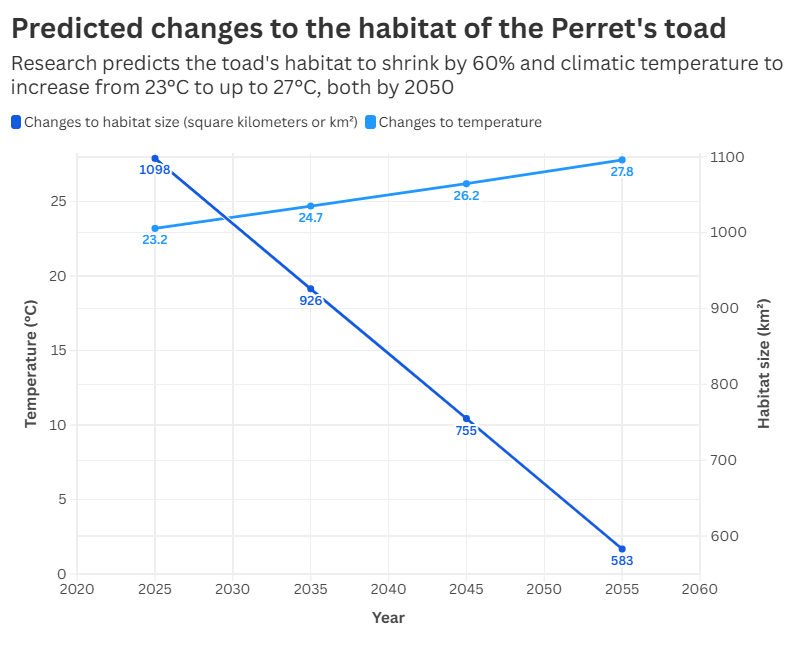
Research in the forest
More recently, in November 2024, researcher John Onah from the A.P. Leventis Ornithological Research Institute in Jos received support from the Fonseca Species Conservation Fund to study the Perret’s toad’s breeding ecology and raise awareness about the threats it faces. He and his team often trek through the forest at night to find spawning sites, where they take body measurements of adults and tadpoles.
So far, they have gathered valuable information about how and where the toad reproduces, including its habit of depositing eggs alongside those of frogs and other toads in the same spawning sites. The findings will soon be published in a scientific journal. Onah says the project, which will run until February 2026, will enable the development of tailored interventions to protect the species and its habitat.
But conservation work in the Idanre Hills is not straightforward. The toad’s spawning sites may be close to shrines where local people conduct rituals. Onah’s team sometimes must postpone its nocturnal survey work out of respect for traditions and festivals. Security can also be a concern, says Onah. His team now works with forest guards and guides from the Ministry of Culture and Tourism during fieldwork.
Researchers cannot access certain areas that the community considers sacred, says Oladimeji Johnson, a palace chief, known as Sugbon of Idanre (Chief Sugbon), and a popular herbalist. “If a researcher comes, he or she will be assigned someone who knows the terrain and can direct them on which way to go and which way not to,” he says.
Community perspectives
Conservation clashes with culture in other ways too. Frogs and toads feature in local diets and traditional medicines. The farmer Sunday explains that while there are alternatives to eating frogs, local healers have specific requirements. He says that when leaders of his indigenous religion request a toad for medicinal use, he must follow such a directive, even if it is the Perret’s toad.
Cocoa farmer Razak Isiaka Abiodun says he has never used frogs or toads for medicinal purposes but knows several people that do. He does, however, eat the edible ones regularly. Abiodun says he has never heard of the Perret’s toad and its plight, but is open to learning about and helping to conserve it. He says that, with government support, the community could work to preserve the toad’s habitat and penalize anyone who is caught endangering the species.
For researchers like Nneji and Onah, such willingness gives hope. Both have worked to educate the community about the toads and threats to their habitat, including in local schools. “We also want to establish amphibian clubs to help grow young people’s knowledge about biodiversity — amphibians — and their importance in the environment,” says Onah.

Policy gaps and missed opportunities
While conservationists are working out how to engage with communities on the ground, national policy remains slow to respond to biodiversity loss. As a party to the UN Convention on Biological Diversity, Nigeria is obligated to produce and implement a National Biodiversity Strategy and Action Plan (NBSAP). But its first one expired in 2010 and was not updated until 2016. And after that plan expired in 2020, it was not replaced until July of this year when the Federal Ministry of Environment published the revised NBSAP for 2025 to 2030.
Plans such as the NBSAP are essential, says Onadeko, but there need to be provisions for the creation of protected areas and adequate funding for researchers to protect species like the Perret’s toad. But as the latest NBSAP itself acknowledges, its implementation “will require huge financial resources” — the total budget required is US$474 million, a challenging sum to raise from domestic and international sources.
The project leader for the revised NBSAP — Sikeade Egbuwalo from the Ministry of Agriculture’s Department of Forestry — could not be reached to comment on funding and capacity-building issues despite numerous phone calls and emails.
Fungal fears
Consecutive late revisions of Nigeria’s NBSAPs have left critical windows without a coordinated national biodiversity policy, jeopardizing the futures of endangered species in the country. Such gaps have consequences. Without monitoring or funding, species like the Perret’s toad face unchecked threats. Researchers are concerned that the toad may have been exposed to a deadly disease called chytridiomycosis during such periods, increasing its risk of extinction.
Worldwide, the fungal infection is responsible for the decline of around 500 species of amphibians and the extinction of 90 more. The fungus’s resurgence in Africa has been well documented but, according to Nneji, there have been no extensive studies on whether it has contributed to the decline of amphibians in Idanre Hills and the rest of Nigeria.
“Understanding whether this disease, combined with human activities and climate change, is driving the toad toward extinction is crucial. We cannot scientifically say it is present, but we also cannot rule it out. Until we have results from targeted studies, we cannot confirm its presence or absence,” he noted.
Calls for protection
Given its localized distribution, the fate of the Perret’s toad may depend more on actions at the state than the national level. But as Olatubosun Olugbenga Dare, deputy director of environmental assessment at the Ondo State Ministry of Environment, acknowledges, state funding for amphibian research “is limited or non-existent”.
One option for the species, he says, is to designate Idanre Hills as a protected area — specifically an ‘Other Effective Area-Based Conservation Measure’, a status that recognizes areas achieving conservation outcomes despite that not being their primary purpose.
Conservationists arguing for greater protection for the Perret’s toad include Tunde Morakinyo, the executive director of the Africa Nature Investors Foundation, a non-profit managing conservation at the Gashaka Gumti National Park in Adamawa and Taraba States, and Okomu National Park in Edo State.
“Ondo State should [make] the Idanre Hills a wildlife sanctuary or the Federal Government should make the Idanre Hills a national park, so that it becomes protected under the law,” he says, adding that community rangers should be recruited to prevent illegal activities affecting the Perret’s toad.
Glimmers of hope
The Perret’s toad’s fate hangs in the balance. The species survived unnoticed for forty years, but today faces new and growing threats. Its story mirrors the broader crisis facing Nigeria’s biodiversity whose extraordinary richness is under relentless pressure.
“Unless genuine and concerted efforts are made by the federal, state, or local government to protect these species, we risk losing them,” says zoologist Onadeko. “[The Perret’s toad] is now critically endangered — the stage before extinction in the wild. We must stress the need for conservation measures and keep championing this cause.”
There are glimmers of hope. Farmers like Abiodun say they are ready to protect the animal if they are involved in the process. Scientists are working to uncover the toad’s secrets. And in classrooms around Idanre, children are learning that their hills harbour something found nowhere else on the planet.


